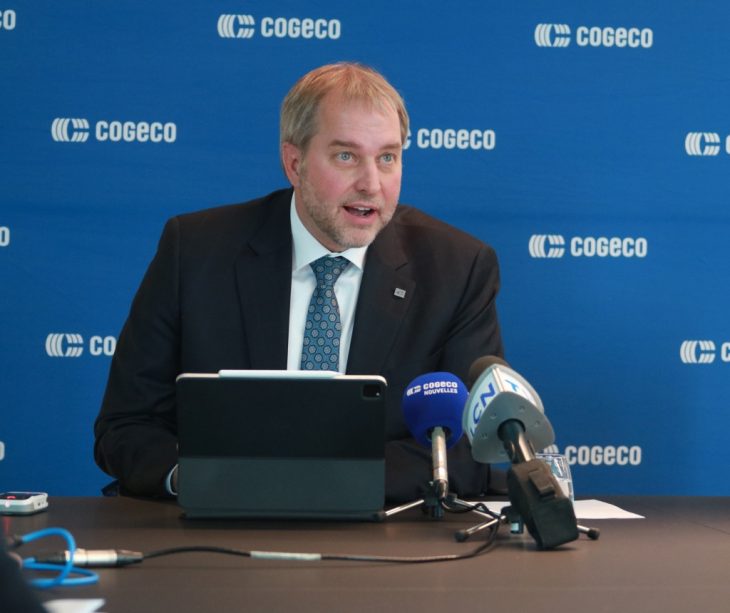
By Ahmad Hathout
Cogeco is warning the CRTC that an application by TekSavvy requesting that the cableco be forced to maintain its coax facilities or else provide aggregated last mile fibre access so it can maintain connectivity to its customers at locations in Burlington and Windsor is offside.
TekSavvy filed the Part 1 application last month warning that its customers at those locations will lose access if Cogeco continues its migration away from older coax technology and toward fibre, alleging that the only means for the wholesaler to get fibre access from a cable company is through the disaggregated regime which isn’t available at those locations.
Cogeco said in a partly redacted response filed this month that the alleged claim that it doesn’t have disaggregated fibre services anywhere is false and that Cogeco needs to move toward the new technology because the coax facilities have been causing service issues and have already reached the end-of-life cycle.
“TekSavvy is not being foreclosed from offering services to its end-customers in either location by Cogeco,” Cogeco said in its response. “Rather, TekSavvy is foreclosing itself by not taking advantage of the services available to it via Cogeco’s TPIA tariff.”
Cogeco’s public reply, however, redacts where it has disaggregated wholesale interconnection locations.
Moreover, Cogeco said nowhere does the commission say that TekSavvy can request that the network on which it rides maintains its existing facilities for it to service those customers.
It is asking for the commission to reject the application.
The CRTC ruled in November that the incumbent telephone companies Bell and Telus must temporarily provide bundled transport and last mile fibre access to wholesalers in Ontario and Quebec within six months to help the competitors provide faster speeds that the commission said is in demand. (Wholesalers said last week they intend to use the regime.)
Crucially, the regulator spared the cablecos from this temporary regime.
Rogers was concerned about what it called a precedent-setting impact of such a request, so it chimed in. It argued that both of TekSavvy’s asks – the halting of coax decommissioning or providing aggregated fibre-to the-premises – would be infeasible and costly.
It described TekSavvy’s application broadly as “extraordinarily intrusive” from a regulatory standpoint.
“If neither option is available, next generation network deployment would be blocked,” Rogers said in its submission. “Even if one of the options is available, the carrier would be required to delay the deployment of next generation facilities and services or incur unnecessary, and possibly unrecoverable, additional costs.
“Either way, carriers lose the ability to efficiently, cost-effectively and dynamically deploy, maintain and operate their network infrastructure, consumers’ access to new services is delayed or denied, and the rates for these services must be increased to compensate for these additional costs,” the cable giant said, adding the temporary aggregated fibre regime was narrowly tailored to limit the negative impact on carriers.
Rogers said that if it has to maintain older facilities, it would result in unrecoverable costs at the current wholesale rate unless that rate is increased.
It also argued that the application is duplicating matters addressed in the current wholesale internet review, which completed its hearing last week, and is therefore a waste of CRTC and stakeholder resources.
Telus similarly argued that TekSavvy is raising issues already being considered by the commission and, therefore, should not open up a parallel proceeding.
TekSavvy is also asking for a broader review of how competitors are impacted by the on-going decommissioning of other copper and coaxial infrastructure beyond those two locations by requesting the CRTC launch a show-cause proceeding or consultation.
To that, Telus said such a show-cause proceeding is not justified or necessarily, but the CRTC can still examine case-by-case situations as TekSavvy has identified in Burlington and Windsor.
Regional cableco Eastlink agreed with not having a duplicative proceeding. It additionally argued in its submission that maintaining both facilities “comes with additional costs and administrative complexities in addition to the costs of maintaining the two networks themselves,” it said in its submission, adding it’s up to providers to determine when they need to retire older technologies.
It argued that the alternative scenario – that is, forcing providers to open aggregated fibre access – cannot be done at a cost that will disincentivize investment.
The Competitive Network Operators of Canada, a rep for independent telecoms including wholesalers, was in TekSavvy’s corner on this issue.
“The Application presents yet another example of the worsening trend of copper and coaxial cable decommissioning by incumbent providers of wholesale high-speed access services,” the association said. “As explained in the Application, these activities deny wholesale-based competitors the ability to connect end-users and therefore gives rise to an undue preference in favour of Cogeco.”
CNOC said it supports the relief requested by TekSavvy and a request to initiate a broader review of the practice in the industry.
Also in TekSavvy’s side of the ring is the Public Interest Advocacy Centre, saying its unjust that Cogeco is allegedly cutting off new and existing users of the facilities at the same time with the decommissioning.
“Decommissioning of copper and coaxial facilities is going to continue to occur as the Commission modernizes the telecommunications system,” PIAC said in its submission. “Even if the Commission finds no violation of subs. 27(2), the Commission should utilize its powers under section 40 of the Telecommunications Act to enforce interconnection and hold the status quo until such time as a final wholesale framework is decided.”
Photo of Cogeco President and CEO Philippe Jette, by Steve Faguy.
Correction: A previous version of this story said Cogeco said in its reply that it has disaggregated fibre in the areas TekSavvy disputes. That is not clear because the parts where it has such access is redacted in the public version of its reply.



